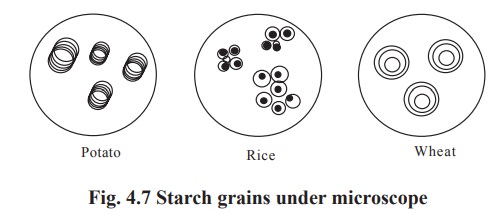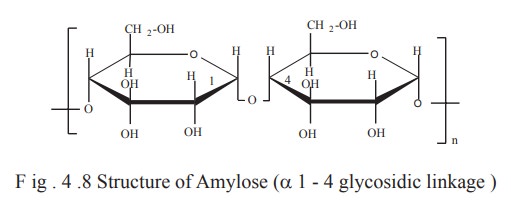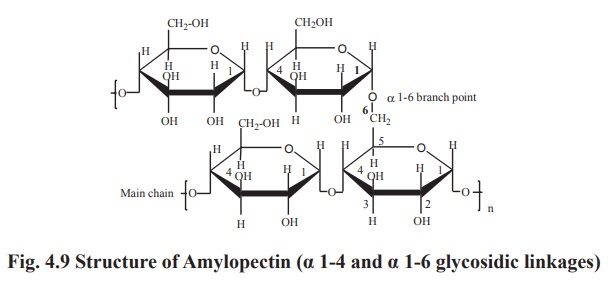Chapter: Biochemistry: Carbohydrates
Poly saccharides
Poly saccharides
Polysaccharides, which are also known as
glycans composed of number of monosccharide units. They represent condensation
products of several molecules of simple sugars or monosaccharides.
Monosaccharides are linked together by glycosidic bonds in polysaccharides.
They form linear chain or branched chain molecules. They contain only one type
of monosaccharide units or many types of monosaccharide units. According to
this nature polysaccharides are classified into two groups, homopolysaccharides
and heteropolysaccharides.
Homopolysaccharides are composed of only one
type of monosaccharides. On hydrolysis they yield only one type of
monosaccharides Eg. starch, glycogen, cellulose etc. which yield only glucose
on hydrolysis.
Heteropolysaccharides are composed of a mixture
of monosaccharides. On hydrolysis, they yield a mixture of monosaccharides. Eg.
Hyaluronic acid, Heparin, Mucopolysaccharides.
1. Starch
This is the storage form of carbohydrate
present in plants. They are abundantly found in root, stem, vegetables, fruits
and cereals. The bulk of our diet which consists mainly of rice, wheat and
vegetables is good source of starch.

Starch occurs in the forms of grain which may
be spherical or oval in shape. Microscopically, the starch grains are found to
differ in size and shape according to their sources (Fig.4.7).
Starch is made up of two structurally different
homopolysaccharide units. They are amylose and amylopectin.
In amylose, glucose molecules are arranged in a
linear form. Glucose molecules are arranged in a highly branched form in
amylopectin.

Amylose has 1,4 glycosidic linkages. The
glycosidic - OH group of C1 in one glucose unit is joined to that of
C4 of the next unit (Fig 4.8).

The glucose unit present at each point of
branching has subtituents at carbon atoms 1,4 and 6 i.e it has three points of
attachment (Fig.4.9).
Reaction of starch with iodine
A solution of starch react with iodine to give
blue colour. The blue colour formation is mainly due to the presence of amylose
in starch.

Starch digestion occurs in stages
Digestion of starch, the main carbohydrate
source in the human diet, begins in the mouth. Saliva contains α amylase, which
randomly hydrolyses all the a, 1-4 glycosidic bonds of starch except its
outer most bonds and those next to branches.By the time thoroughly chewed food
reaches the stomach, where the acidity inactivates a-amylase, the average chain
length of starch has been reduced from several thousand to fewer than eight
glucose units.
Starch digestion continues in the small
intestine under the influence of pancreatic amylase which is similar to
salivary amylase. This enzyme degrades starch to a mixture of disaccharide
maltose and the trisaccharide maltotriose. These oligosaccharides are
hydrolysed to their component monosaccharides by specific enzymes persent in
the brush border membranes of the intestinal mucosa. The resulting
monosaccharides are absorbed in the intestine and transported to the blood
stream.
2. Glycogen
Glycogen is a homopolysaccharide since it gives
only glucose units on hydrolysis. It is the major reserve carbohydrate in
animals. Glycogen is present in all cells of skeletal muscle and liver and
occur as cytoplasmic granules. Among plants, it is found in fungi and yeast.
Primary structure of glycogen resembles that of amylopectin but glycogen is
more highly branched, with branch points occurring every 8 to 12 glucose
residues (Fig. 4.10). Glycogen is readily available as immediate source of
energy. During starvation glycogen is mobilised from the storage tissue and
converted to glucose by the enzyme glycogen phosphorylase. Glucose formed like
this is oxidised to produce energy. The degree of branching is considerably
more in glycogen when compared to starch.

Formation of glycogen from glucose is called as
Glycogenesis and breakdown of
glycogen to form glucose is called as Glycogenolysis.
Related Topics